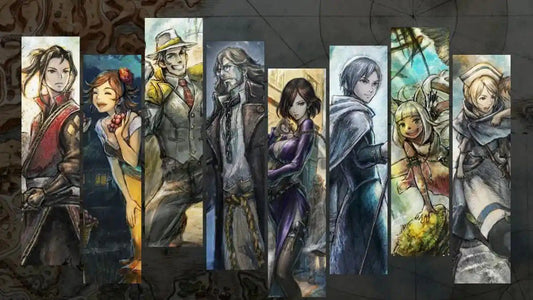Video games have come a long way since their inception in the 1950s. What started as simple, black and white games like "Tennis for Two" has evolved into a multi-billion dollar industry with lifelike graphics and complex storylines. One of the most significant changes in the gaming industry has been the evolution of gaming graphics. In this blog, we will take a retrospective look at how gaming graphics have evolved over the years.
The 1970s and 1980s
In the early days of gaming, graphics were very simple due to the limitations of the technology at the time. The graphics were made up of basic shapes and colors, and the games were played on low-resolution screens. Games like Pong and Space Invaders were very popular during this time, and they set the foundation for the gaming industry. While these games may seem primitive by today's standards, they were groundbreaking at the time.
The 1990s
The 1990s saw a significant shift in gaming graphics. The introduction of 3D graphics allowed for more realistic and immersive gaming experiences. Games like Doom and Quake were some of the first games to use 3D graphics, and they were a massive success. The introduction of CD-ROMs allowed for games to have more data, and as a result, games could include better graphics and sound.
The 2000s
The 2000s saw a continuation of the 3D trend, with games like Halo and Half-Life 2 pushing the boundaries of what was possible with gaming graphics. The use of shaders and lighting effects allowed for more realistic and immersive environments. With the introduction of more powerful hardware and better software, games became more and more detailed and realistic.
The 2010s
The 2010s saw a shift towards more realistic graphics, with games like Crysis and Battlefield 3 pushing the limits of what was possible with gaming graphics. The use of high dynamic range lighting, advanced physics engines, and real-time reflections made games look more like movies than ever before. The introduction of virtual reality also allowed for more immersive gaming experiences, with games like Beat Saber and Half-Life: Alyx setting new standards for VR graphics.
The Future of Gaming Graphics
As we move into the future, the evolution of gaming graphics shows no signs of slowing down. With the introduction of new technologies like ray tracing and machine learning, games are becoming even more realistic and immersive. The use of cloud gaming also allows for more advanced graphics, as the processing power of the cloud can be used to render even more detailed and complex graphics. With the continued advancement of technology, it's exciting to think about what the future holds for gaming graphics.
In conclusion, the evolution of gaming graphics has been a remarkable journey, with each decade bringing new advancements and technologies. From simple shapes and colors to photorealistic environments, gaming graphics have come a long way. As technology continues to advance, it's exciting to think about the new possibilities that will arise, and the ways in which gaming graphics will continue to evolve.





